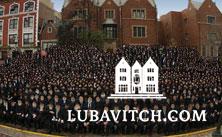
The Jewish Pride Revolution
Our vocabulary has changed.
In the Jewish community today, “mitzvah” is a common word; tefillin are not strange, exotic paraphernalia for the Bar-mitzvah boy — but familiar articles. Shabbat candles are no longer “something grandmother lit” on Friday nights — but a commonly observed practice throughout Jewish society; leafy-roofed sukot huts? — even “yuppie” suburbanites build them, and everyone knows about them.
It wasn’t always this way.
Just a few short decades ago mitzvot and holidays were the private, quiet domain of the few. Then came the Rebbe’s “Mitzvah campaigns,” and Lubavitch literally took to the streets. “Did you put on tefillin today?” “Can I offer you Shabbat candles?” “Can I interest you in some classes on Judaism?” On Wall Street in New York, in London’s Picadilly Circus, and in Tel Aviv’s Dizengoff Square, Jewish pride and Jewish precepts came out of the closest forever.
The effect? One word sums it up. Revolution. An ever-burgeoning renaissance of belief and resurgence of interest in the traditions of Judaism. For countless individuals and families, that mitzvah in-the-street was the first step on the road to an intensified identification with Jewishness, with Jewish education and Jewish observance.
To name a few.
Tefillin: it is the familiar human condition: Heart and mind struggle. Where mind is ineffectual, where emotion dominates unrestricted, the seeds of tragedy are sown. The head-tefillin are placed on the head, the seat of intellect, and the hand-tefillin on the left arm, opposite the heart. The idea is subservience of the mind and heart to G-d, and control of the hand and arm — the instruments of action of the mind and heart.
In addition, the wearing of tefillin, our Sages teach, instills fear in the hearts of our people’s enemies. Shortly before the outbreak of the Six-Day-War in June, 1967, the Rebbe launched his unprecedented tefillin campaign, whose most famous “outpost” is at the Western Wall, the Kotel, in Jerusalem, where several million visitors have since observed this cardinal mitzvah.
Mezuzah: Daily, Jews recite the scriptural command about Mezuzah, in the sh’ma prayer: And you shall write them upon the doorposts of your house, and upon your gates. The Code of Torah-Law states: A human king sits inside and his servants guard him from the outside, but you sleep on your beds and the Holy One Blessed-Be-He guards you (i.e. through the Mezuzah on your doorposts) from the outside.
In 1974, the Rebbe launched a global Mezuzah campaign, which sparked a total renaissance in Mezuzah observance worldwide, and since then tens of thousands of faded, unfit mezuzot have been discovered and replaced and several hundred thousand new mezuzot have been affixed in Jewish homes.
Kosher: It was summer, 1975. Speaking in Lubavitch headquarters, with simultaneous telephone transmission to audiences around the globe, the Rebbe addressed the problems caused by lack of kosher observance. He called upon the Jewish family to return to the scrupulous observance of “the kosher laws,” addressing his remarks primarily to the woman, who is the dominant influencing factor in keeping a kosher home and who therefore bears the main responsibility for implementing this vital mitzvah.
As for the cost factor in changing a kosher kitchen, the Rebbe instructed that a fifty-percent rebate of expenses be made a universal offer. Chabad emissaries began to actively promote the campaign, and today there are untold tens of thousands of homes that have become kosher all around the world today.





